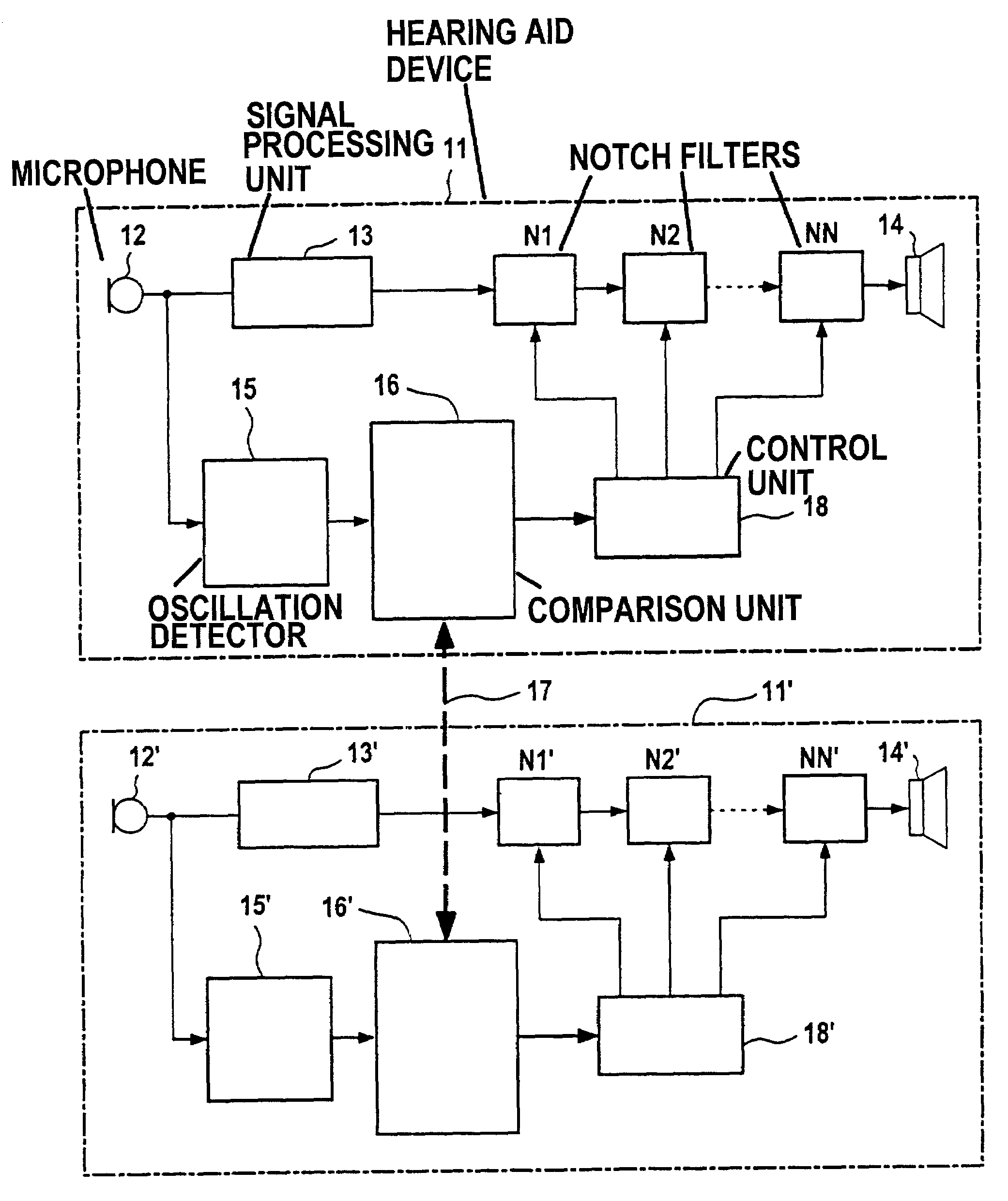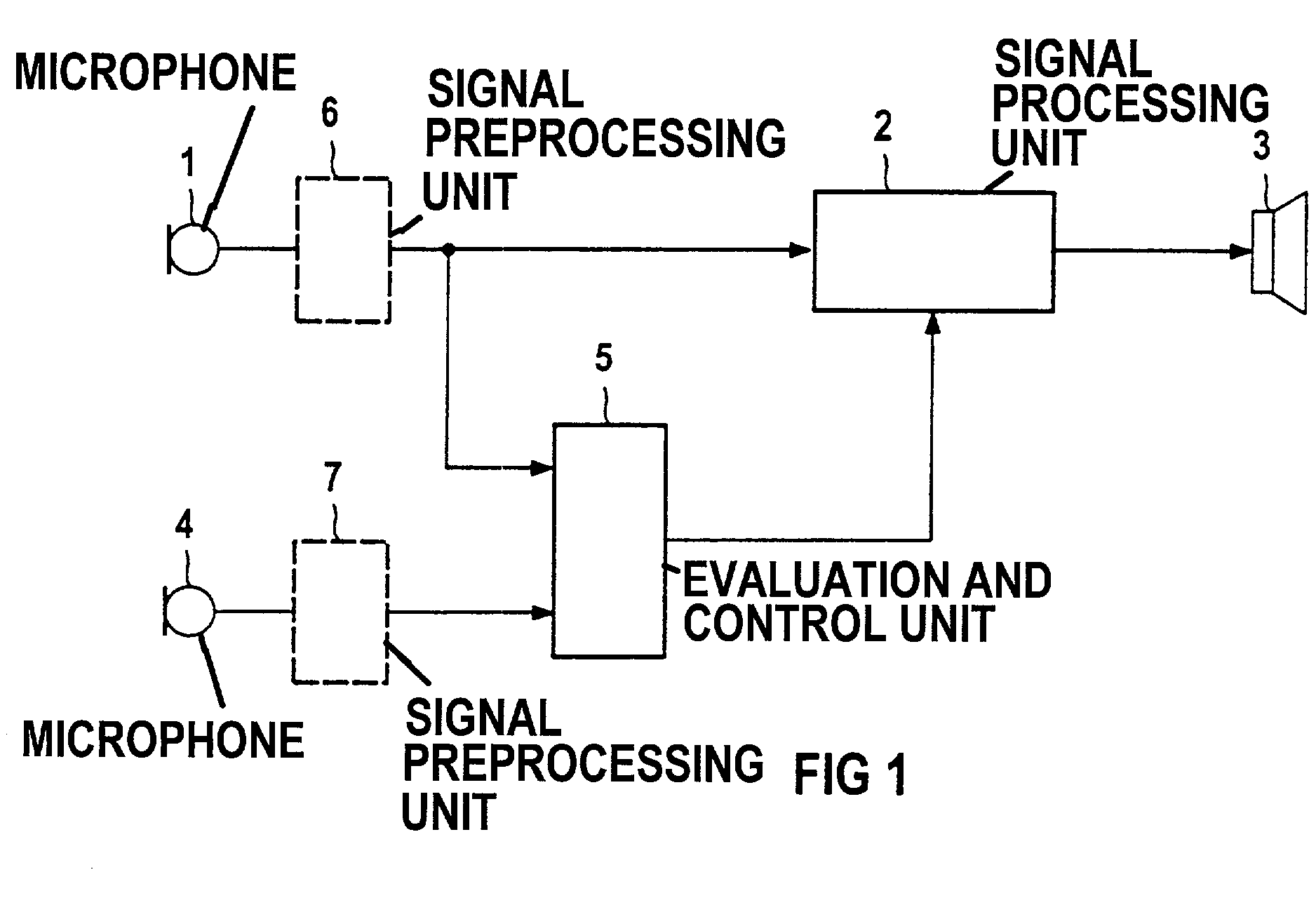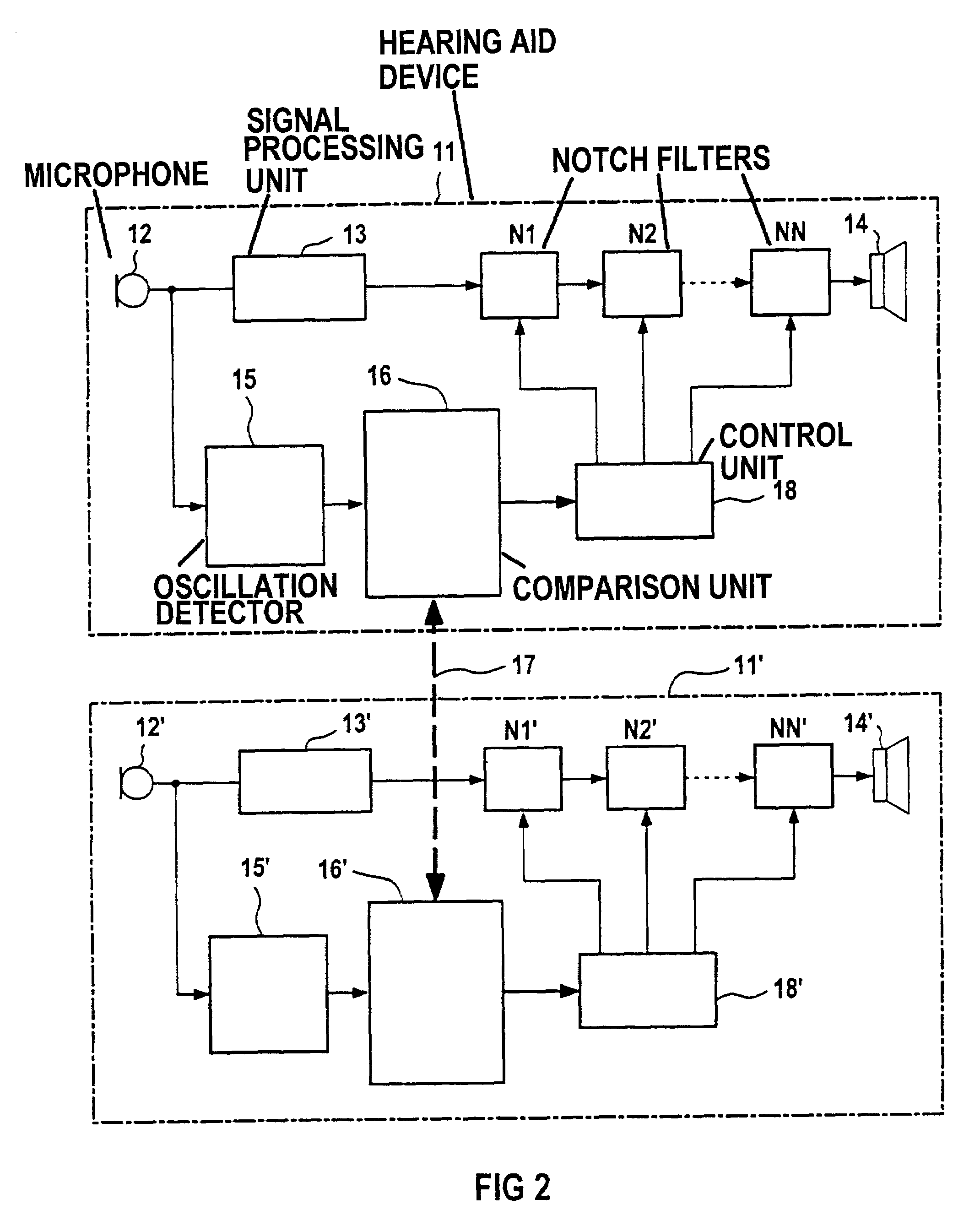Method for the operation of a hearing aid device or hearing device system as well as hearing aid device or hearing device system
a technology of hearing aids and hearing aids, applied in the direction of public address systems, electrical equipment, transmission, etc., can solve the problems of loop amplification, no longer achievable hearing aid gain, and extremely unpleasant for hearing aid users, so as to reduce feedback-conditioned oscillations and without noticeably deteriorating sound quality
- Summary
- Abstract
- Description
- Claims
- Application Information
AI Technical Summary
Benefits of technology
Problems solved by technology
Method used
Image
Examples
Embodiment Construction
[0032]The hearing aid device schematically shown in FIG. 1 comprises a microphone 1, a signal processing unit 2 as well as an earphone 3. When sound from the earphone 3 proceeds back to the microphone 1, then feedback-conditioned oscillations (feedback) can arise. The conditions for this are that the “loop amplification” of the system, i.e., the product of the hearing aid gain and the attenuation of the feedback path, is greater than 1, and that the phase shift of this loop amplification corresponds to a whole-numbered multiple of 360°. Given the hearing aid device according to FIG. 1, a further microphone signal from a microphone 4 is supplied to an evaluation and control unit 5 in addition to the microphone signal of the microphone 1. The two microphones 1 and 4 are arranged such that useful sound is picked up approximately uniformly by both microphones. Sound proceeding from the earphone 3, however, cannot proceed to the microphone 4 or can at most proceed to it in a highly atten...
PUM
 Login to View More
Login to View More Abstract
Description
Claims
Application Information
 Login to View More
Login to View More - R&D
- Intellectual Property
- Life Sciences
- Materials
- Tech Scout
- Unparalleled Data Quality
- Higher Quality Content
- 60% Fewer Hallucinations
Browse by: Latest US Patents, China's latest patents, Technical Efficacy Thesaurus, Application Domain, Technology Topic, Popular Technical Reports.
© 2025 PatSnap. All rights reserved.Legal|Privacy policy|Modern Slavery Act Transparency Statement|Sitemap|About US| Contact US: help@patsnap.com



